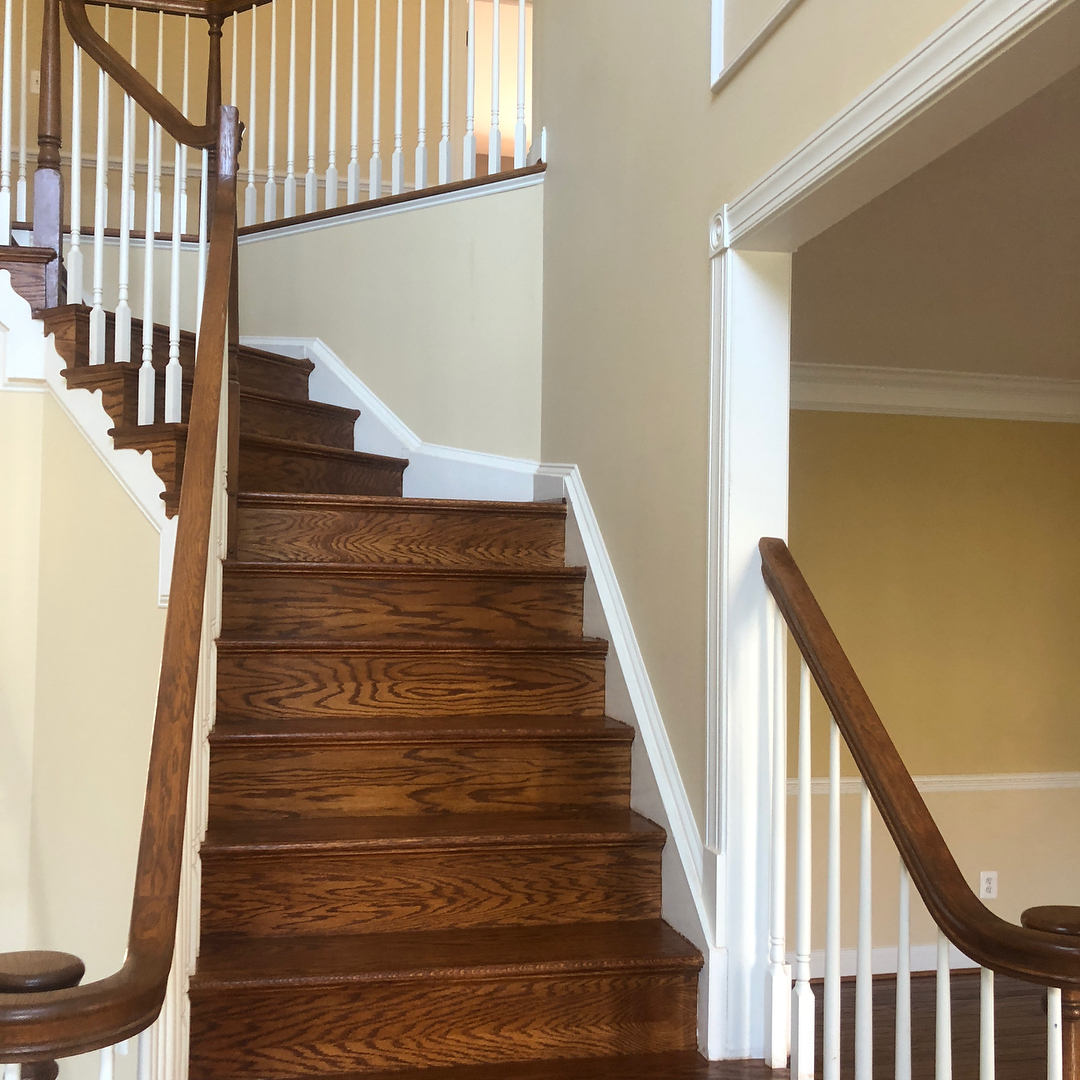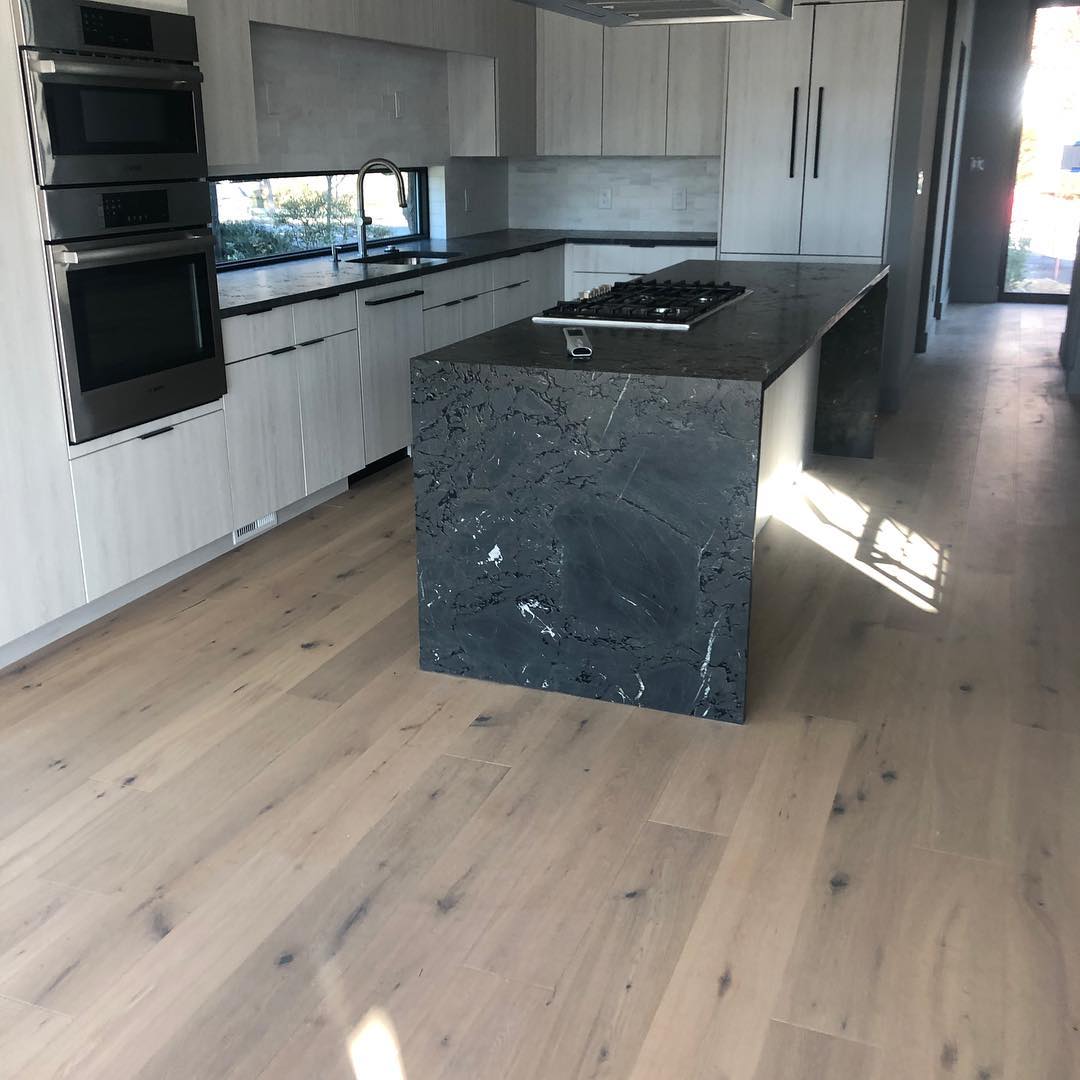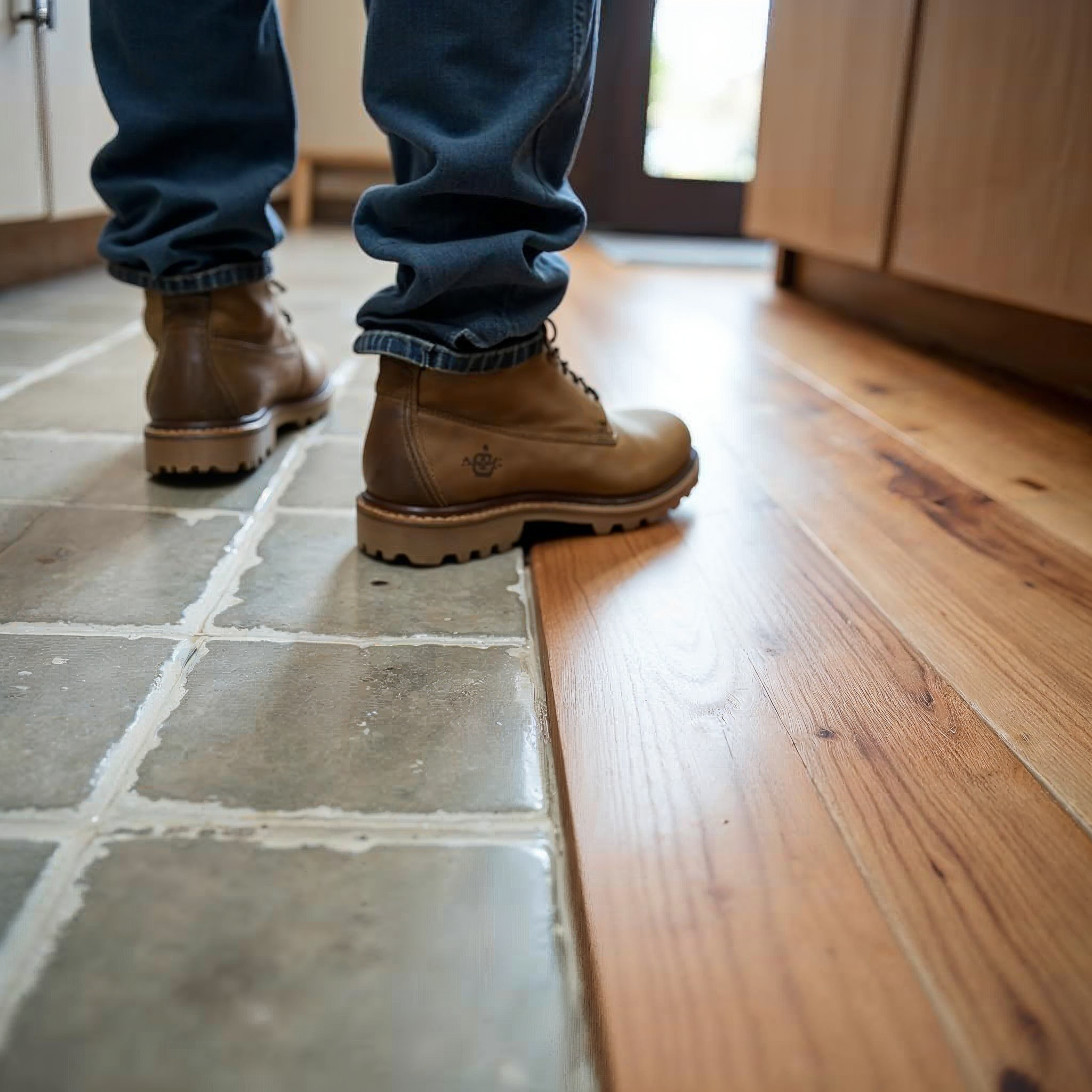How to Choose the Right Hardwood Flooring for Your Home
Choosing the Right Wood Types for Your Home: Top Tips for Interior Designers and Homeowners

Selecting the perfect wood type for your home can significantly impact both the aesthetic and functional qualities of your living space. With an array of options available, hardwood flooring selection becomes a crucial decision for interior designers and homeowners alike. Each wood type brings its unique charm and character, influencing not just the look but also the durability and maintenance needs of your floors. In this guide, we delve into the nuances of choosing the right wood types, offering insights into how these choices can enhance your home decor. Whether you’re undertaking a renovation or a new build, understanding these elements will ensure a successful installation and a beautiful, cohesive design.
Understanding Wood Types
When it comes to hardwood flooring selection, understanding the different wood types is crucial. Let’s explore popular hardwoods, exotic options, and sustainable choices to help you make an informed decision for your home decor.
Popular Hardwood Varieties
Oak, maple, and hickory are among the most popular hardwood varieties for flooring. Each offers unique characteristics that cater to different preferences and needs.
Oak is known for its durability and classic grain pattern, making it a versatile choice for various home styles. It comes in two main types: red oak, with its warmer tones, and white oak, which offers a cooler, more contemporary look.
Maple, on the other hand, is prized for its light color and smooth grain. It’s particularly resistant to wear, making it an excellent choice for high-traffic areas. Hickory stands out for its exceptional hardness and distinctive grain patterns, perfect for rustic or country-style interiors.
Exotic Wood Options
Exotic wood types offer unique aesthetics and often superior durability compared to domestic varieties. These options can add a touch of luxury and distinctiveness to your home decor.
Brazilian Cherry, known for its rich reddish-brown color, is a popular exotic choice. It’s extremely hard and resistant to wear, making it ideal for busy households. Another exotic option is Tigerwood, which features striking orange tones with dark streaks, resembling a tiger’s stripes.
Mahogany is prized for its deep, warm color and fine grain. While it’s softer than some other exotics, it’s still durable and develops a beautiful patina over time. When considering exotic woods, be mindful of their environmental impact and ensure they’re sourced responsibly.
Sustainable Wood Choices
Sustainability is increasingly important in hardwood flooring selection. Eco-friendly options not only reduce environmental impact but can also add unique character to your home.
Bamboo, technically a grass, is a rapidly renewable resource that’s harder than many traditional hardwoods. It’s available in various colors and styles, including strand-woven bamboo, which is exceptionally durable.
Cork is another sustainable choice, harvested from the bark of cork oak trees without harming the tree. It’s naturally antimicrobial, sound-absorbing, and provides a soft, warm surface underfoot.
Reclaimed wood, sourced from old buildings or fallen trees, offers unmatched character and history. Each plank tells a story, making your floor truly one-of-a-kind while reducing demand for new timber.
Factors in Hardwood Flooring Selection

Choosing the right hardwood flooring involves more than just aesthetics. Let’s explore the key factors that should influence your decision, including durability, cost, and environmental considerations.
Durability and Maintenance
When selecting hardwood flooring, durability and maintenance requirements are crucial factors to consider. These aspects directly impact the longevity and appearance of your floors over time.
The Janka hardness scale is a useful tool for comparing wood hardness. For high-traffic areas, consider harder woods like hickory or Brazilian cherry. Softer woods like pine may be suitable for low-traffic areas or if you prefer a more rustic look that embraces wear over time.
Finish type also affects durability. Site-finished floors often offer better moisture protection, while pre-finished options are typically more scratch-resistant. Regular maintenance, such as sweeping and occasional refinishing, will keep your floors looking their best for years to come.
Consider your lifestyle when choosing. If you have pets or children, opt for harder woods and finishes that can withstand more wear and tear.
Cost Considerations
The cost of hardwood flooring can vary significantly based on several factors. Understanding these can help you make a choice that fits both your aesthetic preferences and your budget.
Wood type is a primary cost factor. Domestic hardwoods like oak and maple are generally more affordable than exotic species. The grade of wood also affects price, with clear grades (fewer knots and color variations) being more expensive than rustic grades.
Installation method impacts cost as well. Pre-finished flooring is typically more expensive upfront but can save on installation time and costs. Site-finished floors offer more customization but require more labor and time to install.
Don’t forget to factor in long-term costs. While some options may be cheaper initially, they might require more frequent refinishing or replacement, increasing costs over time.
Environmental Impact
The environmental impact of your hardwood flooring choice is an increasingly important consideration. Sustainable options can help reduce your carbon footprint while still providing beautiful, durable floors.
Look for certifications like FSC (Forest Stewardship Council) when choosing wood. These ensure the timber comes from responsibly managed forests. Reclaimed wood is another eco-friendly option, giving new life to old materials.
Consider the production process as well. Some engineered woods use less timber than solid hardwood, potentially reducing environmental impact. However, be cautious of products with high VOC (Volatile Organic Compound) emissions, which can affect indoor air quality.
Local sourcing can also reduce environmental impact by minimizing transportation emissions. Plus, it often supports local economies and can result in unique, regionally-specific flooring options.
Matching Wood to Home Decor
Selecting the right wood type is crucial for creating a cohesive and appealing home decor. Let’s explore how to coordinate colors and styles, create visual flow, and enhance room ambiance with your hardwood flooring choice.
Coordinating Colors and Styles
Choosing the right wood color and style is essential for creating a harmonious home decor. The key is to consider your overall design scheme and how the flooring will complement other elements in your space.

For traditional interiors, medium to dark woods like walnut or cherry can add warmth and elegance. These rich tones pair well with classic furniture styles and warm color palettes. In contrast, lighter woods like ash or maple can brighten up a room and work well in contemporary or Scandinavian-inspired spaces.
Consider the undertones of your wood flooring. Cool-toned woods can complement blue and green color schemes, while warm-toned woods enhance reds, oranges, and yellows. Remember, contrast can be as effective as matching. A light wood floor can beautifully offset dark furniture, creating a striking visual impact.
Creating Visual Flow
Hardwood flooring plays a crucial role in creating visual flow throughout your home. The right choice can unify spaces and guide the eye from room to room, creating a sense of cohesion and spaciousness.
Consider using the same wood type and color throughout open-plan areas to create a seamless look. In larger homes, you might transition to different woods in separate areas, but ensure they complement each other in tone and style.
The direction of wood grain can also influence visual flow. Running boards parallel to the longest wall can make a room appear larger, while diagonal installation can add visual interest and perceived space to smaller rooms.
Don’t forget about transitions between different flooring types. Use threshold strips or gradual transitions to create a smooth flow between hardwood and other materials like tile or carpet.
Enhancing Room Ambiance
The right hardwood flooring can significantly enhance the ambiance of a room, influencing its perceived size, warmth, and overall character.
Light-colored woods can make a room feel more spacious and airy, perfect for smaller spaces or rooms with limited natural light. Dark woods, on the other hand, can add coziness and sophistication, ideal for creating intimate atmospheres in dining rooms or studies.
Consider the wood’s grain pattern as well. Woods with prominent grains, like oak or hickory, can add texture and visual interest, while smoother grains like maple create a more subtle, refined look.
The finish of your hardwood can also affect ambiance. Glossy finishes reflect more light, brightening a space, while matte finishes absorb light, creating a softer, more muted atmosphere.
Installation Tips and Tricks
Proper installation is crucial for the longevity and appearance of your hardwood flooring. Let’s explore the pros and cons of DIY versus professional installation, how to prepare your space, and essential post-installation care.
DIY vs. Professional Installation
Deciding between DIY and professional installation is a crucial step in your hardwood flooring project. Each option has its advantages and considerations.
DIY installation can be cost-effective and rewarding for those with the right skills and tools. It allows for complete control over the process and can be a great learning experience. However, it requires significant time, effort, and attention to detail. Mistakes can be costly and may void warranties.
Professional installation, while more expensive, ensures expert handling of your flooring. Professionals have the necessary tools and experience to deal with subfloor issues, complex layouts, and proper acclimation of the wood. They can often complete the job faster and with a higher level of finish.
Consider your skill level, available time, and the complexity of the installation when making your decision. For intricate patterns or large areas, professional installation is often the safer choice.
Preparing Your Space
Proper preparation is key to a successful hardwood flooring installation. This step ensures a smooth process and optimal results for your new floors.
Remove existing flooring and ensure the subfloor is clean, dry, and level.
Check for moisture issues and address them before installation.
Acclimate the wood to your home’s environment for at least 48-72 hours.
Plan the layout, considering factors like wood direction and transitions between rooms.
Remember to remove baseboards and undercut door casings to allow for expansion. Proper preparation can prevent issues like gaps, buckling, or squeaking in your new hardwood floors.
Post-Installation Care
After installation, proper care is crucial to maintain the beauty and integrity of your new hardwood floors. Follow these guidelines to ensure your floors stay in top condition.
Allow the finish to cure completely before placing furniture or walking on the floors. This typically takes 24-48 hours for pre-finished floors and up to a week for site-finished floors. Use felt pads under furniture legs to prevent scratches.
Maintain consistent indoor humidity levels (between 35-55%) to prevent wood expansion or contraction. Use window coverings to protect floors from direct sunlight, which can cause fading or discoloration over time.
Establish a regular cleaning routine using manufacturer-recommended products. Avoid excess water or harsh chemicals, which can damage the wood or finish. With proper care, your new hardwood floors will remain beautiful for years to come.
Long-Term Care and Maintenance

Proper care and maintenance are essential for preserving the beauty and longevity of your hardwood floors. Let’s explore regular cleaning practices, how to handle wear and tear, and when to consider refinishing for long-term preservation.
Regular Cleaning Practices
Maintaining clean hardwood floors is crucial for their longevity and appearance. A consistent cleaning routine can prevent dirt and grime from scratching or dulling your floors.
Daily sweeping or dry mopping removes surface dust and debris. For deeper cleaning, use a slightly damp mop with a cleaning solution specifically designed for hardwood floors. Avoid excess water, which can seep into the wood and cause damage.
Vacuum cleaners can be used, but ensure they have a bare floor setting or soft brush attachment to prevent scratching. Clean spills immediately to prevent staining or water damage. For stubborn spots, use a cloth dampened with your hardwood cleaner rather than applying the cleaner directly to the floor.
Remember, different finishes may require different cleaning methods. Always follow the manufacturer’s recommendations for your specific flooring type.

Handling Wear and Tear
Even with regular care, hardwood floors will experience some wear and tear over time. Knowing how to address these issues can help maintain your floors’ appearance and structural integrity.
For minor scratches, try using a touch-up pen that matches your floor color. Deeper scratches may require wood filler followed by staining to match the surrounding area. Dents can sometimes be raised by placing a damp cloth over the area and applying heat with an iron, allowing the wood fibers to swell and return to their original position.
To prevent future damage, use furniture pads under heavy items and place rugs in high-traffic areas. Trim pet nails regularly and clean up spills promptly to avoid water damage or staining. Remember, some wear adds character to wood floors, enhancing their natural beauty over time.
Refinishing for Longevity
Refinishing can restore the beauty of worn hardwood floors and extend their lifespan. It’s a more intensive process than regular maintenance but can dramatically improve your floors’ appearance.
Signs that your floors may need refinishing include deep scratches, widespread discoloration, or a dull finish that doesn’t improve with cleaning. The refinishing process typically involves sanding down the existing finish, addressing any damage, and applying a new finish.
For minor wear, screen and recoat might be sufficient. This less invasive process involves lightly abrading the existing finish and applying a new topcoat. It’s quicker and less expensive than full refinishing but can only be done if the wood itself isn’t damaged.
Professional refinishing is often recommended for the best results, especially for intricate patterns or exotic woods. With proper care and occasional refinishing, your hardwood floors can last for generations, continually adding warmth and value to your home.
Fill out the form below and an AG Construction representative will contact you soon.
Contact Us Today


Whether you own a home or business, we’re your single source for complete flooring installation services! Our comprehensive services include:
- Hardwood staining, sanding, refinishing, restoration, and more!
- Carpet removal and installation
- Vinyl luxury plank replacement and installation
- Vinyl tile and COREtec installation
- And more!




